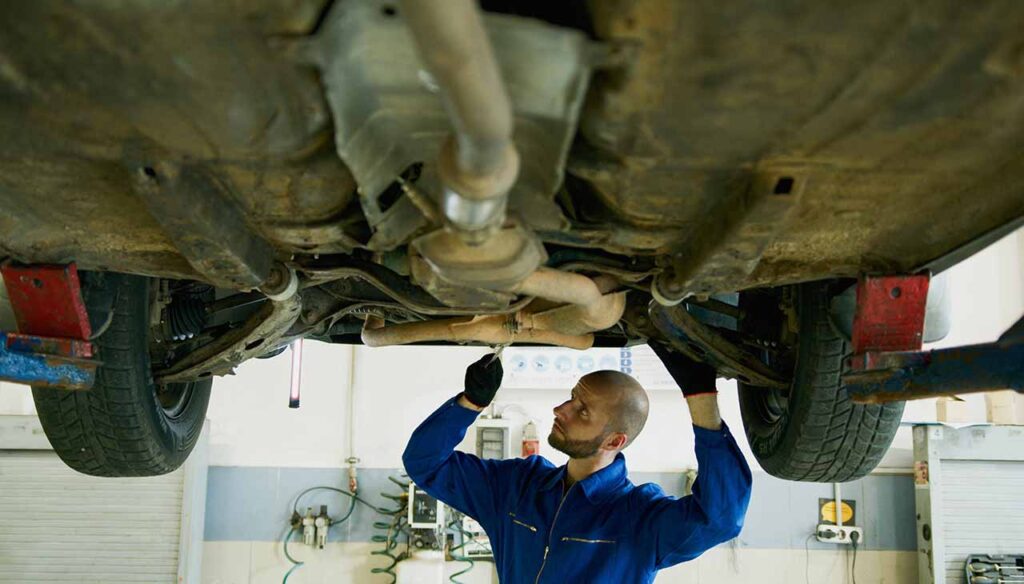Welcome to the basics of auto mechanics, where you’ll dive into the fascinating world of cars and their intricate operations. Whether you’re a novice looking to understand your vehicle better, or an enthusiast eager to expand your knowledge, this guide is designed to equip you with the fundamental concepts. From learning about different engine types to understanding the importance of regular maintenance, this journey will help you navigate the complexities of auto mechanics with ease and confidence. Let’s get started!
Safety Precautions
Before embarking on your auto mechanics journey, it is paramount to understand and adhere to key safety precautions. Always wear protective gear, such as gloves and safety glasses, to protect from harmful fluids and flying debris. Ensure your workspace is well-ventilated to avoid inhaling toxic fumes. Use tools appropriately and remember to disconnect the battery when working with electrical components. Keep a fire extinguisher handy as a safety measure against potential fire hazards. Lastly, never work under a vehicle unless it’s securely set up on jacks or a lift. These precautions, while seeming mundane, could potentially prevent serious accidents and injuries.
Tools and Equipment
In the realm of auto mechanics, having the correct tools and equipment is crucial. Essential items include a basic set of wrenches, screwdrivers, pliers, and a socket set that allows tackling most tasks. Specially designed automotive tools like a torque wrench, breaker bar, and a jack stand are invaluable for specific tasks. An automotive multimeter is a must-have for diagnosing electrical issues. Also, having a creeper can make it easier and more comfortable to work under a vehicle. Remember, investing in quality tools can make your work more efficient and safe. Always keep your tools clean, organized, and in good working condition.
Vehicle Systems
Engine System
The engine, often referred to as the heart of a vehicle, is the main component of the powertrain system. It’s responsible for generating the power necessary to move the vehicle. Engines come in various types, including inline, V-type, and boxer engines, each with distinct advantages and characteristics. Understanding the basic workings of an engine, such as the four-stroke combustion cycle, is foundational in auto mechanics.
Transmission System
The transmission system is another critical component that works in harmony with the engine to provide power to the wheels. It adjusts the power output from the engine to match the car’s speed and load conditions. There are several types of transmissions, including manual, automatic, and continuously variable transmissions (CVTs). A proper understanding of how transmissions work will help you diagnose and fix many common vehicle problems.
Braking System
The braking system is responsible for slowing down and stopping the vehicle, making it a crucial aspect of vehicle safety. It consists of several components like the brake pedal, master cylinder, brake lines, and the brake assembly (which includes brake pads, calipers, and rotors). Knowledge of how these parts interact to stop a moving vehicle is fundamental to ensuring a vehicle’s safe operation.
Suspension System
The suspension system enhances the comfort of passengers by smoothing out the ride and improves vehicle control by managing tire traction. Key components include springs, shock absorbers, struts, and anti-sway bars. Familiarity with the different types of suspension systems and their functioning can prove beneficial in diagnosing and dealing with ride and handling issues.
Electrical System
Finally, the electrical system, which includes the battery, alternator, and starter, alongside a myriad of sensors and actuators, plays a crucial role in a modern vehicle. It powers everything from the ignition system to the vehicle’s lighting and infotainment system. Understanding the basics of automotive electrical systems is vital in diagnosing and fixing a broad spectrum of vehicle problems.
Basic Maintenance
Regular maintenance is the key to keeping a vehicle running smoothly and reliably. A few basic maintenance tasks can significantly extend the life of a vehicle and prevent costly repairs.
Oil Change
One of the most important maintenance tasks is changing the engine oil regularly. The engine oil lubricates, cools, and cleans the engine, preventing wear and tear. Most manufacturers recommend an oil change every 5,000 to 7,500 miles, but this can vary depending on the vehicle and the type of driving.
Tires
Tire maintenance includes regularly checking the tire pressure and rotating the tires. Proper tire pressure improves fuel efficiency and reduces the risk of a blowout. Rotating the tires regularly ensures even wear, which can extend the life of the tires.
Brakes
Brake maintenance includes checking the brake fluid level and inspecting the brake pads, rotors, and lines for wear or damage. Regular brake inspections can prevent costly repairs and ensure the vehicle is safe to drive.
Filters
Changing the air filter and fuel filter at recommended intervals can improve engine performance and fuel efficiency. The air filter prevents contaminants from entering the engine, and the fuel filter prevents contaminants in the fuel from damaging the engine.
Battery
Regularly inspect the battery for signs of corrosion and clean the terminals as needed. Most batteries last 3 to 5 years, but it’s a good idea to test the battery every 2 years after the vehicle is 3 years old.
These basic maintenance tasks are not only essential for the longevity of the vehicle but are also crucial in ensuring your vehicle’s safety. Remember, a well-maintained vehicle is a well-performing vehicle.
